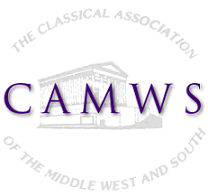2019 Semple Award Recipient Eduardo García-Molina
“Parece que tienen alma las piedras de Grecia. Son modestas, y como amigas del que las ve. Se entran como amigas por el corazón. Parece que hablan.”
“The stones of Greece appear to have souls. They are modest and are like friends to those who see them. They enter through the heart like friends. They appear to be speaking.”
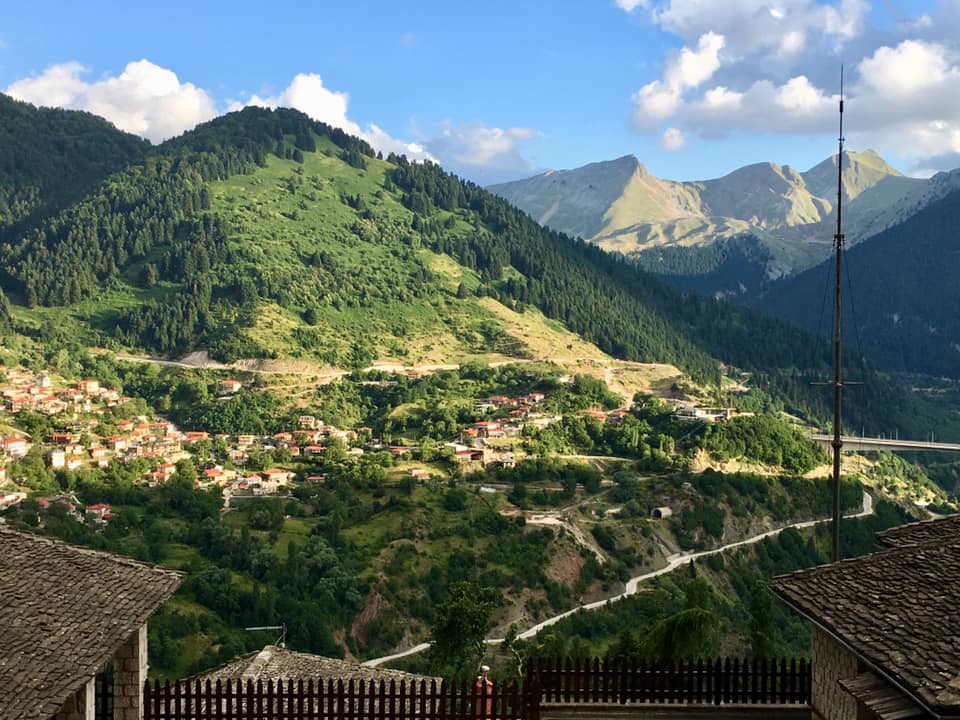
Jose Martí’s words perfectly encapsulate, I believe, my initial reaction to Greece and the bevy of experiences I had during the six weeks of the ASCSA summer session. It is my hope that in this brief blurb I can sketch a rough picture of this trip, the people in my group, and, of course, my gratitude towards CAMWS for making this journey possible.
Parroting Pausanias, we began our intrepid trek in Attika. Our coterie was composed of a motley crew of graduate students, undergraduates, and teachers under the direction of Matthew Sears. Bonds were immediately formed, smelted in the unrelenting Greek heat and forged by ambulatory toil. Such physical exertion, however, was quickly forgotten as we were led around the Agora by John Camp and through the National Museum by Olga Palagia. The initial climb to the Akropolis, never mired by the throng of tourists, affirmed my fascination with antiquity and the relevance of our field in a moment of realization that I thought was only possible in contrived movie plots.
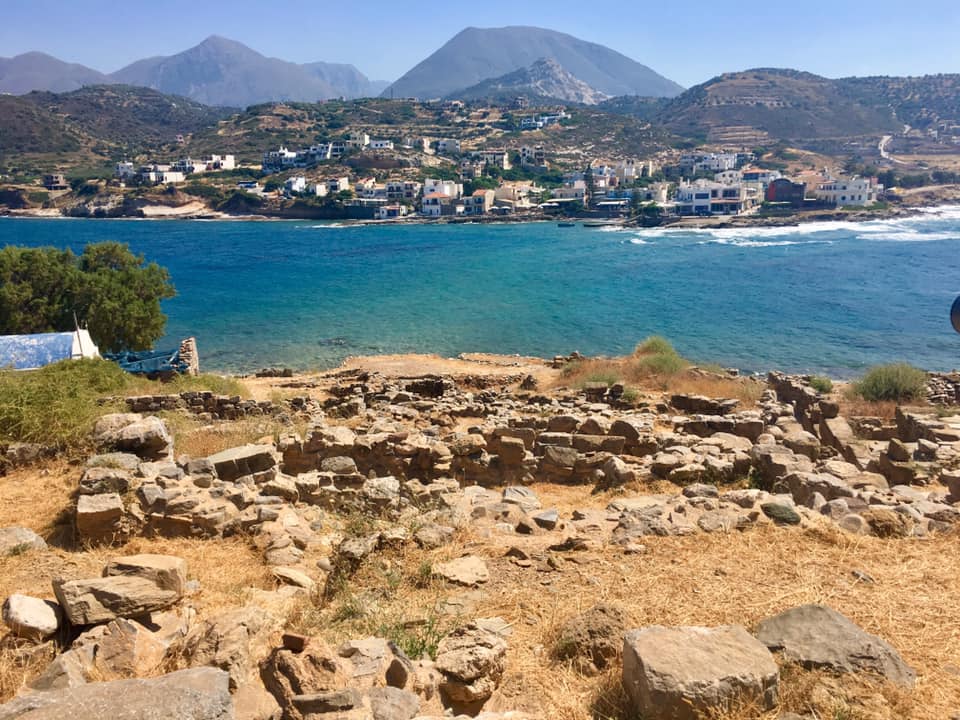
Our first major expedition was Crete. Heraklion was particularly notable not only for the wonderful museum, but also the food. In a scene that seemed to be a parody of the dinner sequence in Beauty and the Beast, we were treated to a Cretan culinary tour de force of fresh seafood. Our days were filled with visits to Minoan sites, competitive goat-counting during bus rides, and beaches the likes of which I have not witnessed outside of Puerto Rico. One standalone moment for me was a small side-excursion I had with another groupmate to the Gorge of the Dead, a surreal ravine both in terms of its natural beauty and the Minoan burial sites that dotted its steep faces. Another day, we went to Gortyn and saw its famed law code. That night, we settled in Matala and enjoyed the soulful twangs of “Hotel California” that concert speakers were blaring and bouncing off of the cave-dotted cliffs.
 Once we were back in Attika, we were treated to a tour of the Akropolis museum spearheaded by Jenifer Neils and Alan Shapiro. The following day, we went to the fortress of Eleutherai to witness a peculiar Boeotian inscription that could only be seen during a narrow timeframe (à la Indiana Jones.) In that same day trip, we went to Aigosthena and swam close to a tower originally constructed by Demetrios Poliorketes after visiting Eleusis and sitting within the Telesterion. Notably, I also experienced my first earthquake ever while doing laundry in Loring Hall.
Once we were back in Attika, we were treated to a tour of the Akropolis museum spearheaded by Jenifer Neils and Alan Shapiro. The following day, we went to the fortress of Eleutherai to witness a peculiar Boeotian inscription that could only be seen during a narrow timeframe (à la Indiana Jones.) In that same day trip, we went to Aigosthena and swam close to a tower originally constructed by Demetrios Poliorketes after visiting Eleusis and sitting within the Telesterion. Notably, I also experienced my first earthquake ever while doing laundry in Loring Hall.
Our second expedition was to the Peloponnese. I have never been more thankful for the invention of the automobile than when we faced the climb up the Akrokorinth. The view that the fortification afforded was awe-inspiring and it was clear to see why this location was one of the famed fetters of Greece that Philippos V pined for in his gamble to dominate the mainland. We proceeded to Korinthos proper where Christopher Pfaff and Ioulia Tzonou-Herbst showed us the current excavations. We eagerly took the opportunity to handle different votive offerings and curse tablets incised with acerbic, if not mildly comical, threats. We went to Nemea where, for me, the specter of Makedonian influence in mainland Greece loomed large in the background, soon to be usurped by Flamininus in his (in)famous proclamation. We climbed the slopes of Mt. Lykaion alongside David Romano and Mary Voyatzis, visited Olympia, and saw the criminally undersized statue of Polybios in Megalopolis. Our stalwart summer session strategos, Matthew Sears, led us through battlefields from the Peloponnesian War between breathtaking visits to Mycenean sites. The Peloponnesian trip ended with a wonderful night in Patras where a small group of us stopped for a drink in the middle of the road in an imaginary bar erected by a local mime.
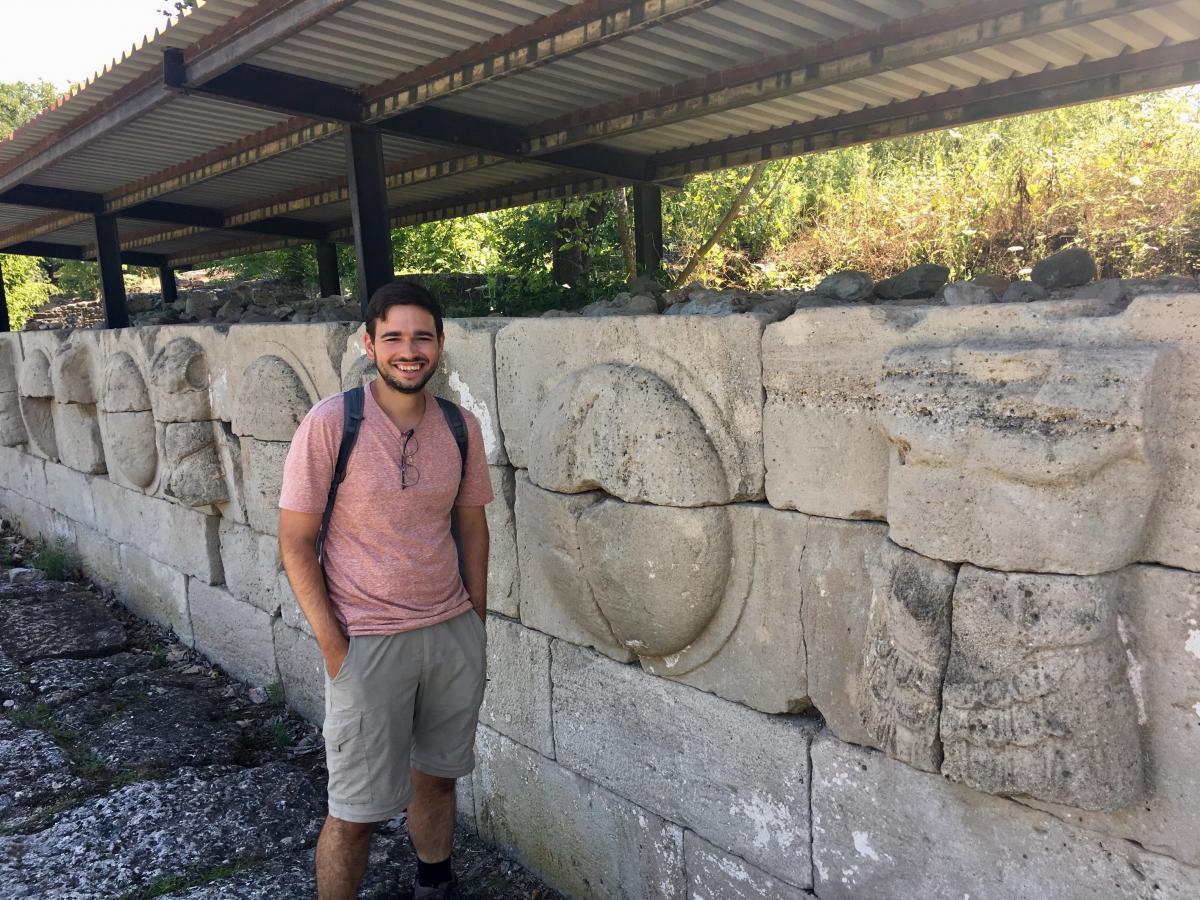 The most gratifying leg of our journey for me, however, was the trip to Northern Greece. I gave a presentation on the battlefield of Plataia, witnessed the forlorn lion that serves as a tomb marker for the Sacred Band of Thebes, listened to Maria Liston give a fascinating presentation on battlefield wounds and osteological evidence, walked around Thermos like the Aitolians that Polybios loathed, and stopped at Actium (a highlight for me due to my fascination with Hellenistic navies.) We visited the tomb of Philippos III Arrhidaios at Vergina and spent a night in Metsovo, a town nestled in the Pindos mountains.
The most gratifying leg of our journey for me, however, was the trip to Northern Greece. I gave a presentation on the battlefield of Plataia, witnessed the forlorn lion that serves as a tomb marker for the Sacred Band of Thebes, listened to Maria Liston give a fascinating presentation on battlefield wounds and osteological evidence, walked around Thermos like the Aitolians that Polybios loathed, and stopped at Actium (a highlight for me due to my fascination with Hellenistic navies.) We visited the tomb of Philippos III Arrhidaios at Vergina and spent a night in Metsovo, a town nestled in the Pindos mountains.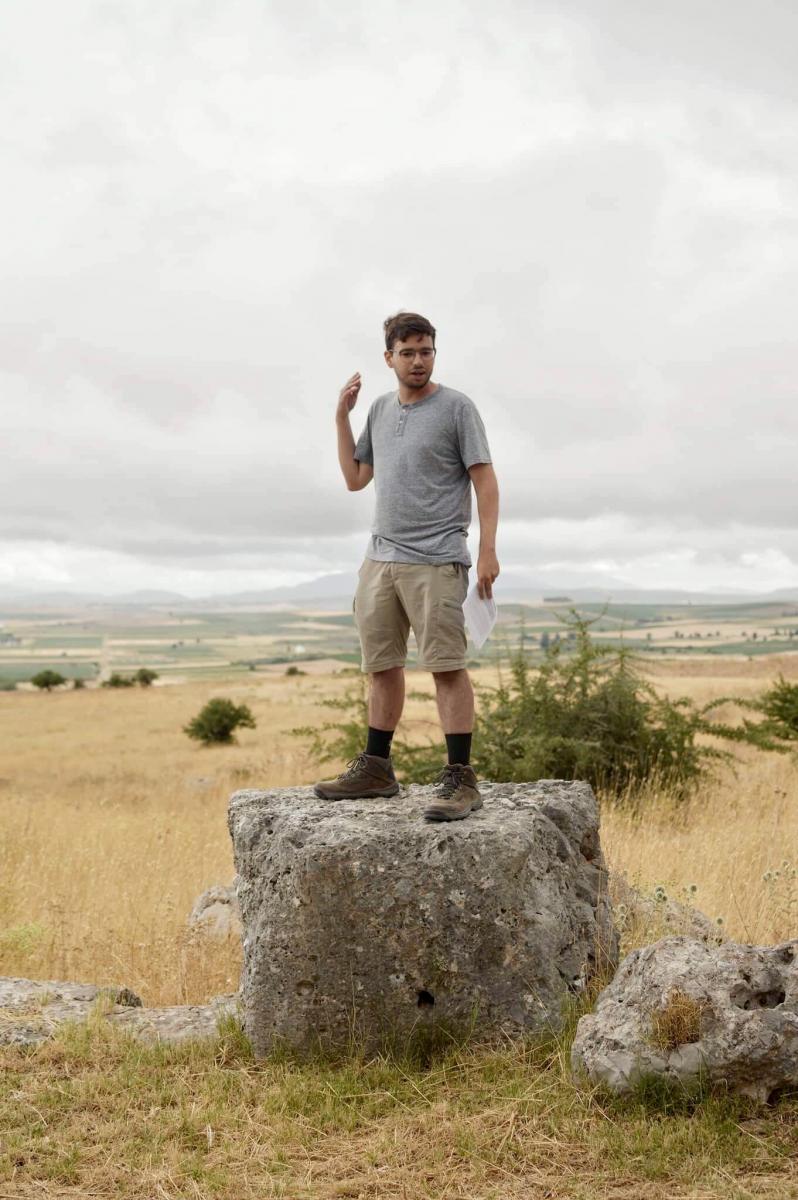
We ended our adventure where we began, Attika. I went to the two best museums in Athens: The Epigraphic Museum (where Dr. Sears and I gushed over the Decree of Chremonides) and the Numismatic Museum with Lee Brice. A bittersweet party hosted by the American School and the lovely staff of Loring Hall was a delightful dénouement to the trip.
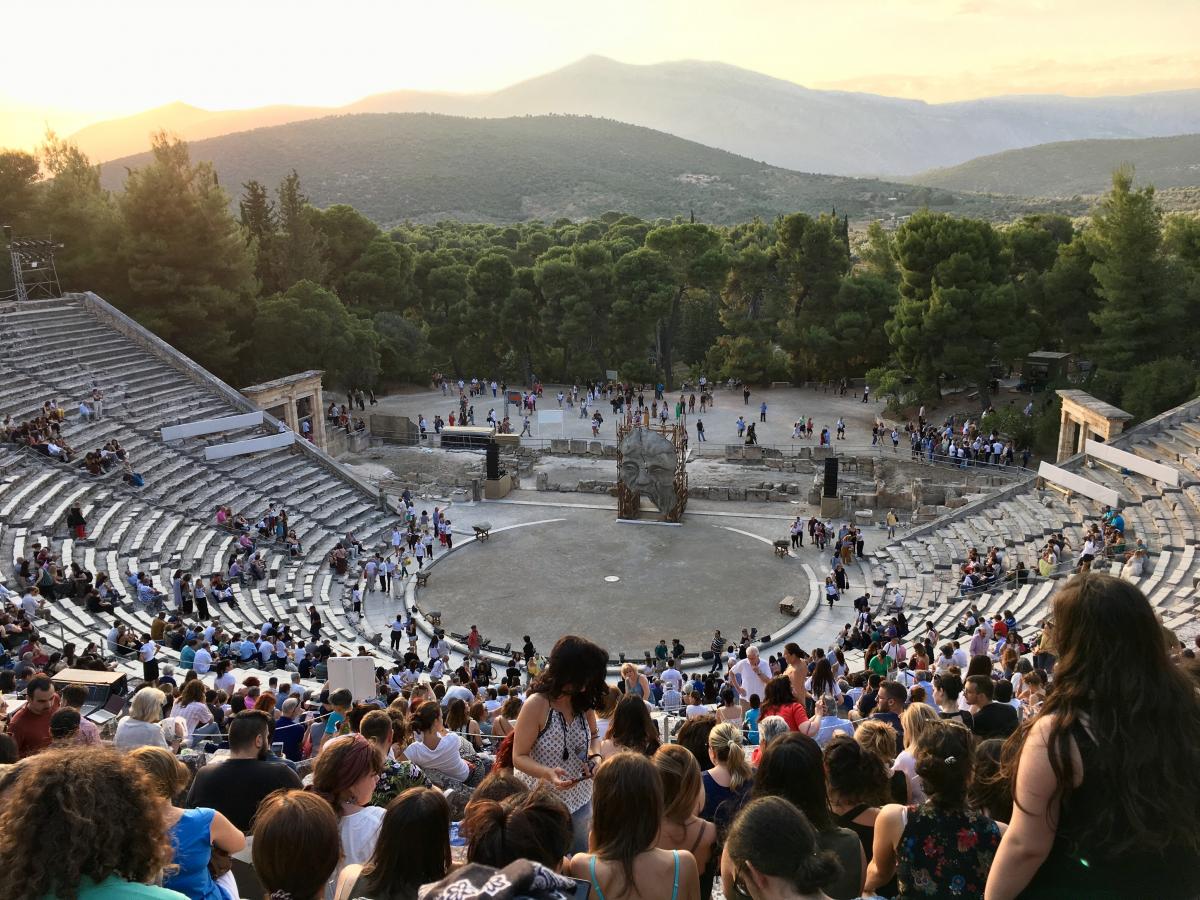 This has been a hard exercise for me. I still think I have not successfully conveyed not only the sheer scale of our wanderings throughout Greece and the diverse array of scholars that we had the pleasure of interacting with, but also the amazing group of friends that made the long bus rides and treks endurable and enjoyable. Once more I wish to express my gratitude to them, Matthew Sears, the ASCSA, and CAMWS for allowing me to explore the rich history of Greece for the first time in person.
This has been a hard exercise for me. I still think I have not successfully conveyed not only the sheer scale of our wanderings throughout Greece and the diverse array of scholars that we had the pleasure of interacting with, but also the amazing group of friends that made the long bus rides and treks endurable and enjoyable. Once more I wish to express my gratitude to them, Matthew Sears, the ASCSA, and CAMWS for allowing me to explore the rich history of Greece for the first time in person.
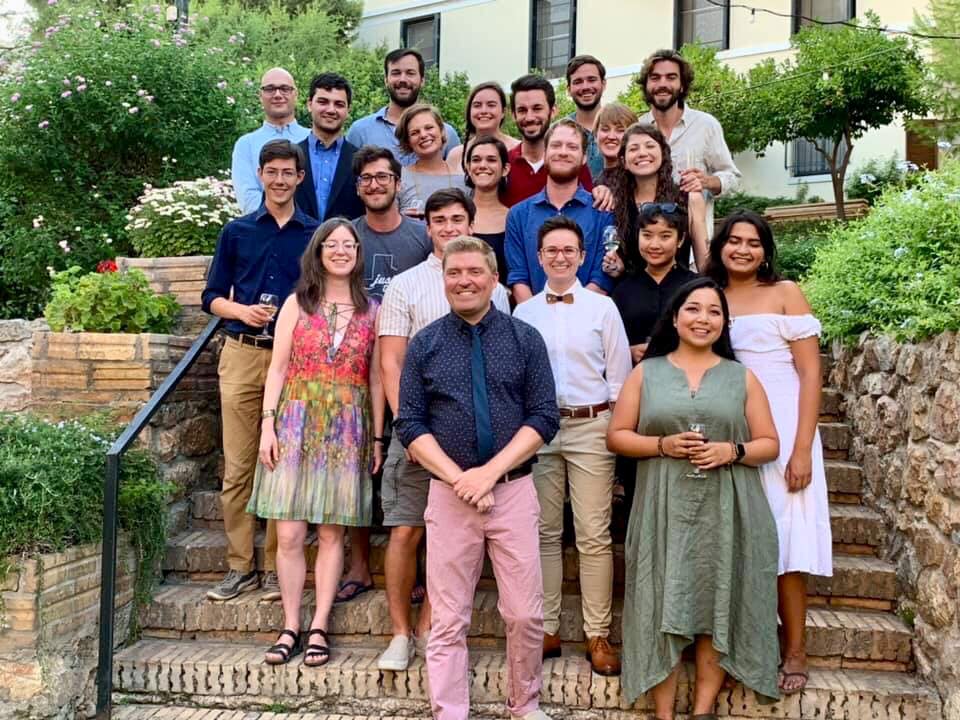
Eduardo García-Molina is a graduate student in the Classics department at the University of Chicago. His work focuses on the Seleukid Kingdom, Ancient Historiography, and the reception of Classics within Latin America.
